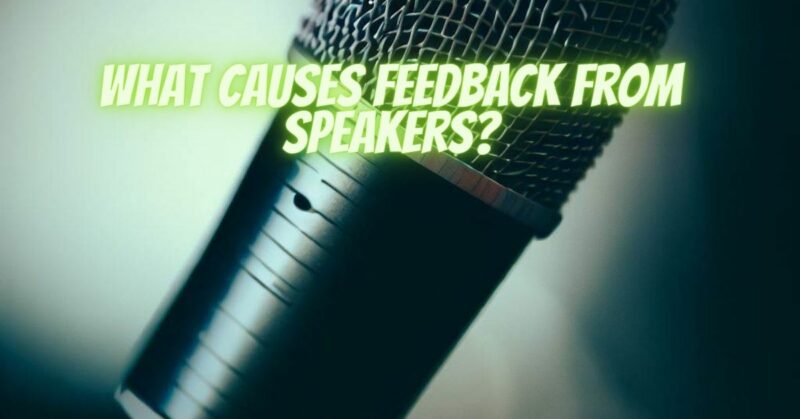Feedback from speakers can be a frustrating and disruptive issue that hampers the quality of your audio experience. Whether you’re setting up a sound system for a live event or simply enjoying music at home, understanding the causes of feedback is crucial for troubleshooting and finding effective solutions. In this article, we’ll delve into the various factors that contribute to feedback and explore the science behind this phenomenon. By gaining insights into the causes, you’ll be equipped with the knowledge to prevent and address feedback issues, ensuring crystal-clear sound reproduction without unwanted noise.
- Microphone Placement and Proximity: Learn how microphone placement and proximity to speakers can lead to feedback. We’ll discuss the importance of proper microphone positioning, the proximity effect, and how sound waves from speakers can loop back into the microphone, resulting in a feedback loop. Discover techniques to avoid this issue and optimize microphone placement.
- Gain and Volume Levels: Explore how improper gain and volume settings can contribute to feedback. We’ll explain the relationship between gain, volume, and feedback, and why excessively high levels can cause feedback to occur. Learn about best practices for setting appropriate gain and volume levels to prevent feedback without compromising sound quality.
- Room Acoustics and Reflective Surfaces: Understand the impact of room acoustics and reflective surfaces on feedback. We’ll delve into the role of reverberation, echo, and reflections in creating feedback-prone environments. Discover strategies to address room acoustics, such as using acoustic treatments and adjusting speaker positioning, to minimize the potential for feedback.
- Speaker and Microphone Placement: Learn how the placement of speakers and microphones relative to each other can affect feedback. We’ll discuss the concept of the “feedback zone” and how positioning speakers and microphones in certain configurations can either minimize or exacerbate feedback issues. Explore optimal speaker and microphone placement techniques to achieve clear, distortion-free sound.
- Equipment Quality and Interference: Discover how equipment quality and interference can impact feedback. We’ll explore the role of poorly shielded cables, low-quality components, and electrical interference in introducing or amplifying feedback. Learn about selecting high-quality equipment and implementing proper grounding techniques to reduce the likelihood of feedback.
- EQ and Audio Processing: Explore how EQ (equalization) and audio processing can influence feedback. We’ll discuss the importance of balancing frequencies and using feedback suppression tools to tame problematic frequencies. Discover how proper EQ settings and feedback control mechanisms can help mitigate feedback issues in different audio setups.
- Feedback Elimination Techniques: Learn about various feedback elimination techniques and tools available. We’ll explore features such as notch filters, feedback suppressors, and automatic feedback reduction systems that can help identify and eliminate feedback in real-time. Discover practical tips for using these tools effectively to enhance your audio experience.
Conclusion:
Feedback from speakers can disrupt the clarity and enjoyment of any audio setup, but armed with knowledge about its causes, you can take proactive measures to prevent and address this issue. By considering factors such as microphone placement, gain and volume levels, room acoustics, speaker and microphone positioning, equipment quality, and employing feedback elimination techniques, you can achieve pristine sound reproduction without the unwanted noise of feedback. With a well-tuned audio system, you’ll be able to immerse yourself in the music or deliver a flawless sound experience for your audience, free from the distractions of feedback.

